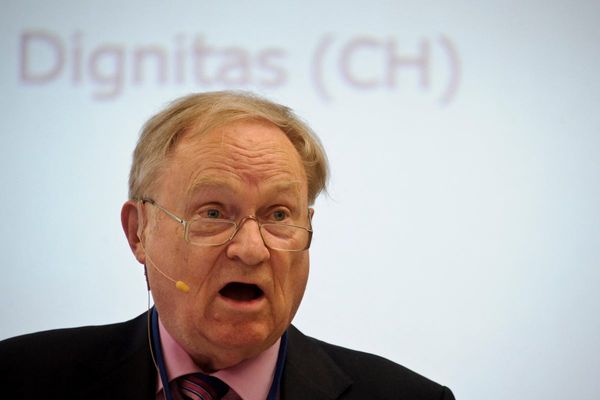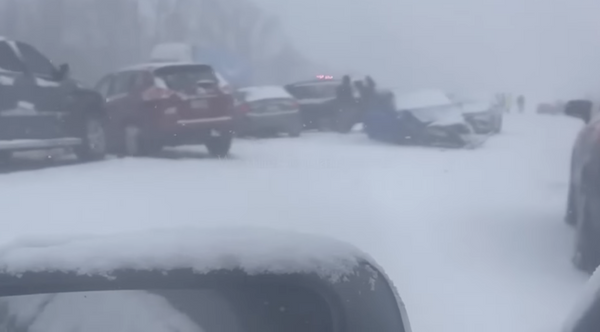Israel’s cabinet has approved a proposed ceasefire deal with Hamas, hours after Donald Trump announced that an agreement had been made that would lead to peace in the region.
On Thursday, Hamas and Israel agreed to the first phase of a ceasefire agreement, which was expected to lead to a pause in Israel’s bombardment and the release of the remaining hostages.
Over two years since the brutal and bloody conflict erupted, many Palestinians and Israelis expressed relief that this may mark the first steps toward a long-term peace.
According to US President Donald Trump, who has claimed credit for brokering the agreement, this is a “historic and unprecedented event” that will lead to “strong, durable, and everlasting peace” in the region.
The UK’s PM, Sir Keir Starmer, also hailed the move, saying it was a “moment of profound relief that will be felt around the world.”
Others, however, are approaching the announcement with more caution — especially because the last ceasefire didn’t hold.
The news came on Thursday, following intense discussions between the two sides held this week in the Egyptian resort town of Sharm El-Sheikh, alongside international mediators from countries including Qatar, Egypt, Turkey, and the US.
Although the ceasefire was expected to be enacted immediately, reports say Israel’s bombardment of Gaza continued well into the night despite celebrations marking a tentative end to the conflict.
At least 67,194 Palestinians, including many women and children, have been slaughtered by Israel over the last two years in what many international organisations have identified as a genocide.
But should the latest ceasefire last, the harsh reality facing Gaza’s civilians is far from over.
Here’s what you need to know.
What is the latest ceasefire agreement?
The news comes with a mix of relief, optimism and hesitation, but many are hoping that this ceasefire will mark an end to two years and two days of bloodshed and destruction, that’s reduced the Palestinian territory to rubble and claimed countless lives.
Hospitals have been bombed, journalists have been targeted, and the civilian population has starved, but some Palestinians are now looking ahead with some optimism.
Over in Israel, amid more jubilant scenes, many Israelis are hoping to be finally reunited with loved ones that have been held captive by Hamas since October 2023.
Hamas will release the remaining Israeli captives as part of the deal. At the same time, Israel’s troops have said they will withdraw from a large part of the Gaza enclave and also release several hundred Palestinian hostages.
It’s understood that around 20 living Israeli captives and the bodies of the remaining deceased Israelis held by Hamas will be handed over as early as this Monday.
Reports also say that Israel will allow 400 aid trucks to finally enter Gaza in the first five days after the ceasefire comes into effect.
What happens now?
At this moment, there is still little guarantee that the ceasefire will lead to lasting peace in Gaza, especially because Israel’s Benjamin Netanyahu has been accused of sabotaging peace efforts in the past.
Eyewitnesses have also told the BBC that Israeli airstrikes continued in Khan Younis, throughout the night, despite the ceasefire agreement. In light of this, there’s still a lot of uncertainty as to how things will evolve.
This phase of the agreement seemingly forms part of Trump’s 20-point plan for Gaza, in which the president outlined that all hostages would be returned, while Hamas also disarms and Israel withdraws from the occupied territory.
According to an analysis by Burcu Ozcelik, Senior Research Fellow in Middle East Security at The Royal United Services Institute, there are still risks that the ceasefire could unravel in the future.
“There is much the deal does not address—an ambiguity likely designed to preserve Israel’s operational flexibility,” she told The Standard.
“In the first stage, success will depend on the return of all Israeli hostages and the release of agreed Palestinian prisoners. Over the longer term, the process is set to grow more fraught, with milestones such as the demilitarisation of Hamas posing a major test, which Israel regards as pivotal to the pace and sequencing of its phased withdrawal. Any breach, or claims of one, could swiftly unravel the ceasefire, providing grounds for a renewed cycle of violence.”
We’ve also been here before, some treating this agreement with caution as a result.
The last ceasefire agreement expired in March 2025, with Palestinian officials accusing Israel of violating the peace agreement before officially relaunching their strikes on Gaza.
Why did this happen now?
The latest ceasefire comes two years and two days after the conflict erupted in October 2023.
The timing of this ceasefire appears to have been shaped by several broader geopolitical considerations.
According to Ms Ozcelik: “The current agreement evolved out of a constellation of factors: It reflects the political leverage exerted by President Trump, intensified Israeli military operations in Gaza City, and a series of western statements signalling that the path to Palestinian statehood may now be irreversible.
“Equally significant was the emerging regional consensus that Hamas cannot remain a governing or security actor in Gaza’s future order,” she continued.
In a phone call with Fox News, Trump also said he had told the Israeli prime minister: “Israel cannot fight the world Bibi, they can’t fight the world.”
What are the concerns?
There’s still much to be answered regarding the direction this ceasefire will take.
The work is also far from over: Gaza is in a state of utter destruction, with health infrastructure largely destroyed and many requiring urgent health care and humanitarian support.
Securing lasting peace, rebuilding efforts, and even addressing the psychological toll of living through this ordeal will likely take years as well as international support.
Ms Ozcelik said: “The deal marks a significant milestone, yet it falls short of ending the conflict.
She continued: “Sustaining a ceasefire will demand constant vigilance, confidence-building and the continued engagement of the US, UK and their allies. The ceasefire may have been won, but the hard work of building the peace is far from done. This will require both sides to make difficult—and in Hamas’s case, existential—compromises.”







